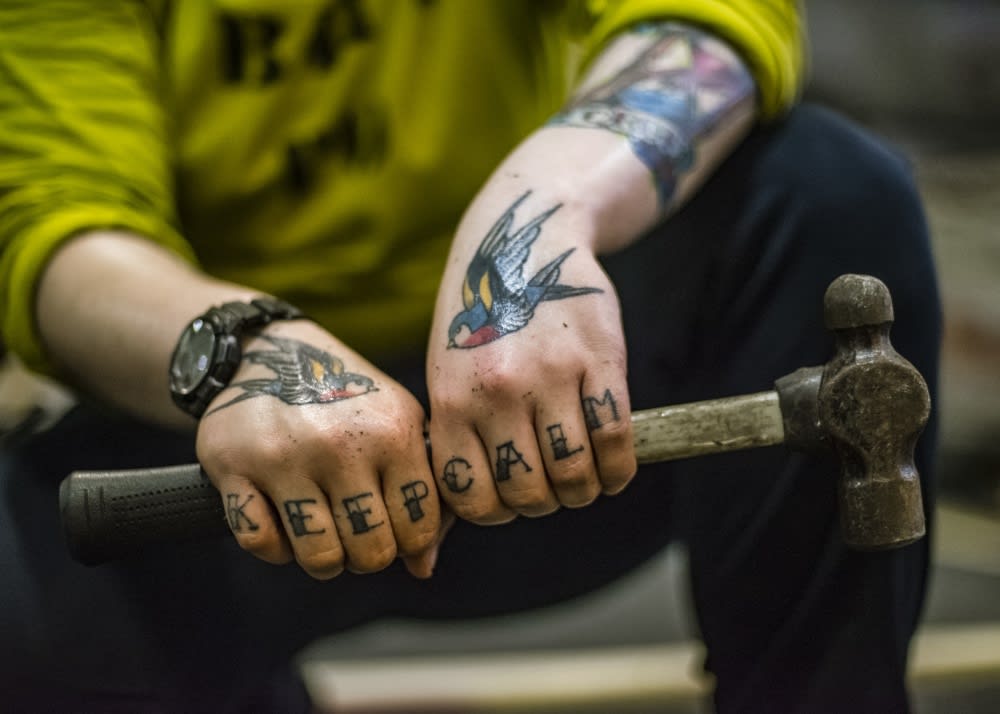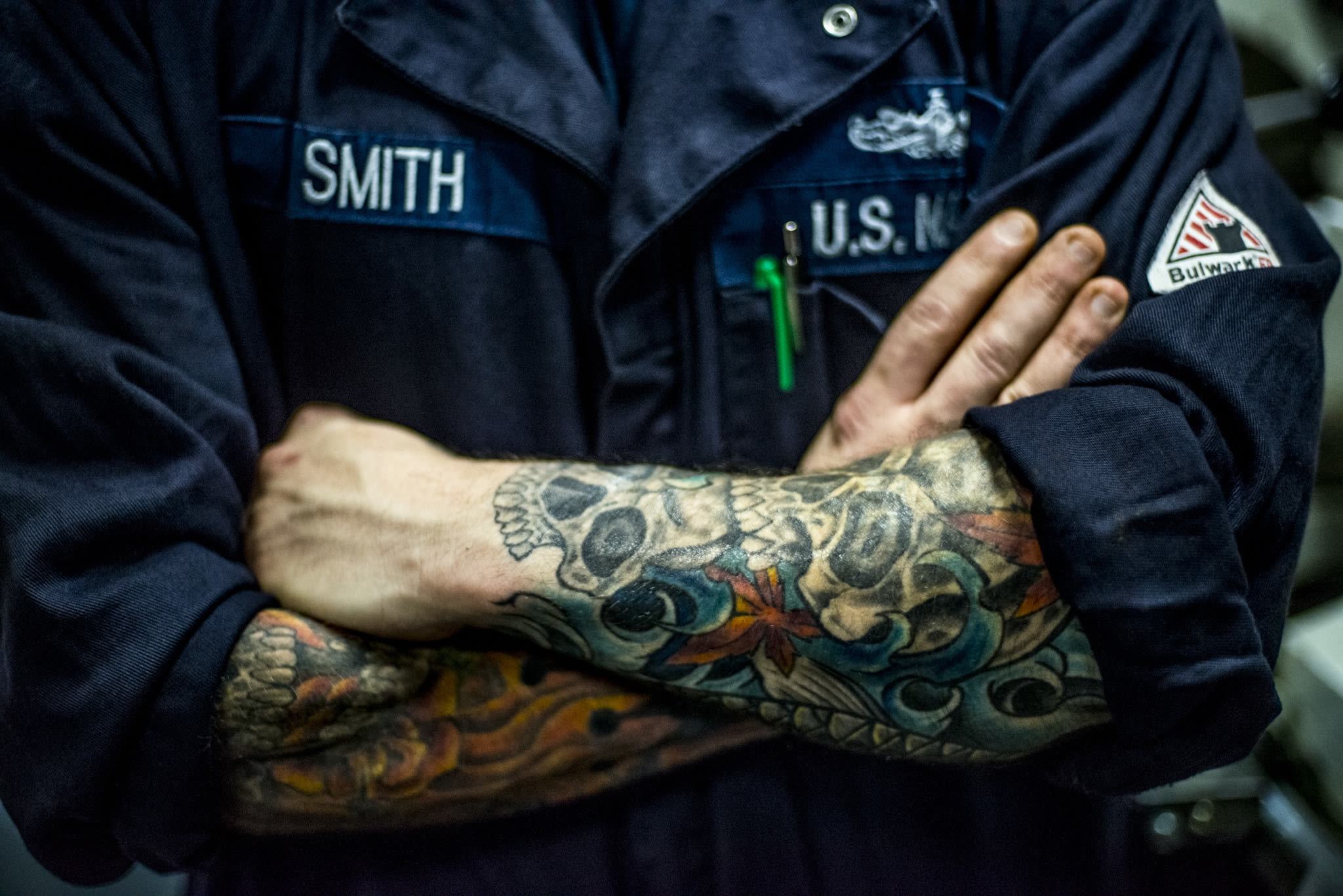
Burgers and fries, Dre and Snoop, tattoos and the Navy—some things just go together.
And Sailors do love their ink. In fact, one in three Sailors has a tattoo. But until recently, sleeve tattoos and some other forms of prominent body art were still not allowed in the service, despite the long history of tattooed seafarers.
America’s Navy has since modernized its policy in response to the evolving workforce it employs—after all, more than 40 percent of millennials have tattoos. The Navy now has the most lenient tattoo policy in the U.S. military, thanks in part to the many Sailors who continue to follow the maritime tattoo traditions.
The history of tattoos in the Navy dates back hundreds of years. Some tattoos designate a Sailor’s job, some symbolize a Sailor’s travels, and some are superstitious. A few classic examples of Naval ink designs and their meaning include:
Swallows

Swallows are among the oldest forms of body art in the Navy. Sailors earn a swallow tattoo for every 5,000 nautical miles traveled.
Anchor
Originally signifying that the wearer had crossed the Atlantic, anchor tattoos are still a popular choice today even for new Sailors who have yet to set foot on a ship. Crossed anchors generally identify sailors as Boatswains Mates, who maintain the decks, tie off the ships, and do other salty work.
Pig and Rooster
Often worn on each foot, tattoos of pigs and roosters were popular in the 1940s and ’50s as a charm against drowning. During WWII, the Navy typically shipped pigs and roosters in wooden crates. When ships were attacked by German U-boats and sunk, the crates stayed afloat. The animals inside were sometimes the only survivors.
‘Hold Fast’

Spelled out on the four front-facing fingers of each hand, ‘Hold Fast’ is another very old naval tattoo born in the Age of Sail (16th to mid-19th century) when Sailors handled rigging. The words are considered good luck by the Boatswains Mates who carry on the tradition.
Shellback Turtle
These are earned when a Sailor crosses the equator for the first time (and completes initiation into King Neptune’s Court, which is a whole ’nother story).
Compass Rose
Often worn on the wrist, the compass rose signifies faith that the Sailor who has it will find his way home safely.
Fully-Rigged Ship
Another tattoo from the Age of Sail, a fully-rigged ship indicates that the Sailor has been around the treacherous Cape Horn at the southern tip of South America.

Tattoos are now a far more common form of self-expression, and the new rules are a nod to that reality.
The rules now allow Sailors to wear tattoos on their necks, hands, and just about any place except their faces. The size and number of neck tattoos are still somewhat limited—no larger than one inch in each direction and no more than one tattoo per neck—but leg and arm tattoos can be of any size (and you can have as many as you want). This formally allows sleeve tattoos, even those that can be seen when wearing short-sleeved uniforms, Popeye-style.
While the rules allow for bigger tats in more places, the art work still has to align with Navy policy, which prohibits obscene, sexually explicit, or discriminatory content “based on sex, race, religion, ethnicity, or national origin.” Tattoos that reference “gangs, supremacist, or extremist groups, or advocate illegal drug use” are prohibited. No exceptions.
The policy was adapted to better represent the enlisted force and embrace the next generation of Sailors taking on the challenges and opportunities of Navy life. Contrary to the perception of some civilians, the Navy permits and even encourages creativity in service to its mission. After all, Sailors who apply ingenuity to their roles can solve more complex problems. Innovation is critical for mission success, so it should come as no surprise that life in the Navy is continuously evolving to support Sailors.

